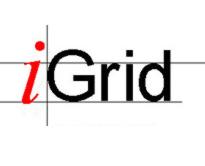
What is iGrid
 |
Global Connectivity The complementary nature of research being conducted both within and outside the United States and the ability to access unique data and computing resources are compelling reasons to construct global interoperable broadband networks. Conversely, the demands of these applications will demonstrate increased expectations for bandwidth, quality of service, and connectivity. |
Enabling these international demonstrations is the National Science Foundation (NSF) sponsored initiative STAR TAP - the Science, Technology And Research Transit Access Point. Started in 1997, STAR TAP anchors the NSF vBNS (very high-speed Backbone Network Service) international program. Networks from Canada (CAnet-2), Singapore (SingaREN), Taiwan (TANet), Russia (MirNET), and the Asian-Pacific Advanced Network consortium (APAN) are connected; Indiana University is the lead institution of the APAN-USA joint venture, named TransPAC. STAR TAP connections to the Nordic countries (NORDUnet), The Netherlands (SURFnet), France (RENATER), and Israel are imminent. Other USA federal agency advanced networks, notably the Department of Defense DREN, Department of Energy ESnet, and NASA NREN are also connected to STAR TAP. STAR TAP is managed by the Electronic Visualization Laboratory, Argonne National Laboratory, the National Center for Supercomputing Applications (NCSA) at the University of Illinois at Urbana-Champaign, and Chicago’s Ameritech Advanced Data Services.
The Electronic Visualization Laboratory and Indiana University, members of NCSA’s National Computational Science Alliance partnership, are working to advance the development of the International Technology Grid. The Grid is a prototype 21st century computational and information infrastructure integrating high-performance computers, visualization environments, remote instruments, and massive databases via high-speed networks to support advanced applications.
iGrid Infrastructure
The iGrid booth contains a variety of SGI workstations (Onyx2, Onyx, Octane, O2), NT / Windows PCs, a plasma panel display, and three ImmersaDesk™ and ImmersaDesk2™ virtual reality displays. The ImmersaDesks can be run in virtual-reality (stereoscopic) or large-screen (monoscopic) display mode.
The SC’98 SCinet (Scientific Computing Network) onsite network offers researchers access to both the commodity Internet and to USA federal high-performance networks, including the NSF vBNS (and, hence, access to STAR TAP), NASA NREN, Department of Defense DREN, Department of Energy ESnet, and Defense Advanced Research Project Agency AAI.
Contact:
iGrid is sponsored by the Electronic Visualization Laboratory at the University of Illinois at Chicago and Indiana University.
Electronic Visualization Laboratory at the University of Illinois at Chicago
www.evl.uic.edu
ph: +1.312.996.3002
fax: +1.312.413.7585
Thomas A. DeFanti, tom @ uic.edu
Maxine D. Brown, maxine @ uic.edu
Dana Plepys, dana @ eecs.uic.edu
Alan Verlo, alan @ eecs.uic.edu
Office of the Vice President for Information Technology, Indiana University
www.indiana.edu
ph: +1.812.855.5752
fax: +1.812.855.3310
Michael McRobbie, vpit @ indiana.edu
Donald F. McMullen, mcmullen @ indiana.edu
Karen Adams, kadams @ indiana.edu
CAVE, ImmersaDesk, and ImmersaDesk2 are trademarks of the University of Illinois Board of Trustees.
Funding for iGrid is provided by the National Science Foundation, Indiana University, and the Electronic Visualization Laboratory at the University of Illinois at Chicago.
| web @ startap.net |